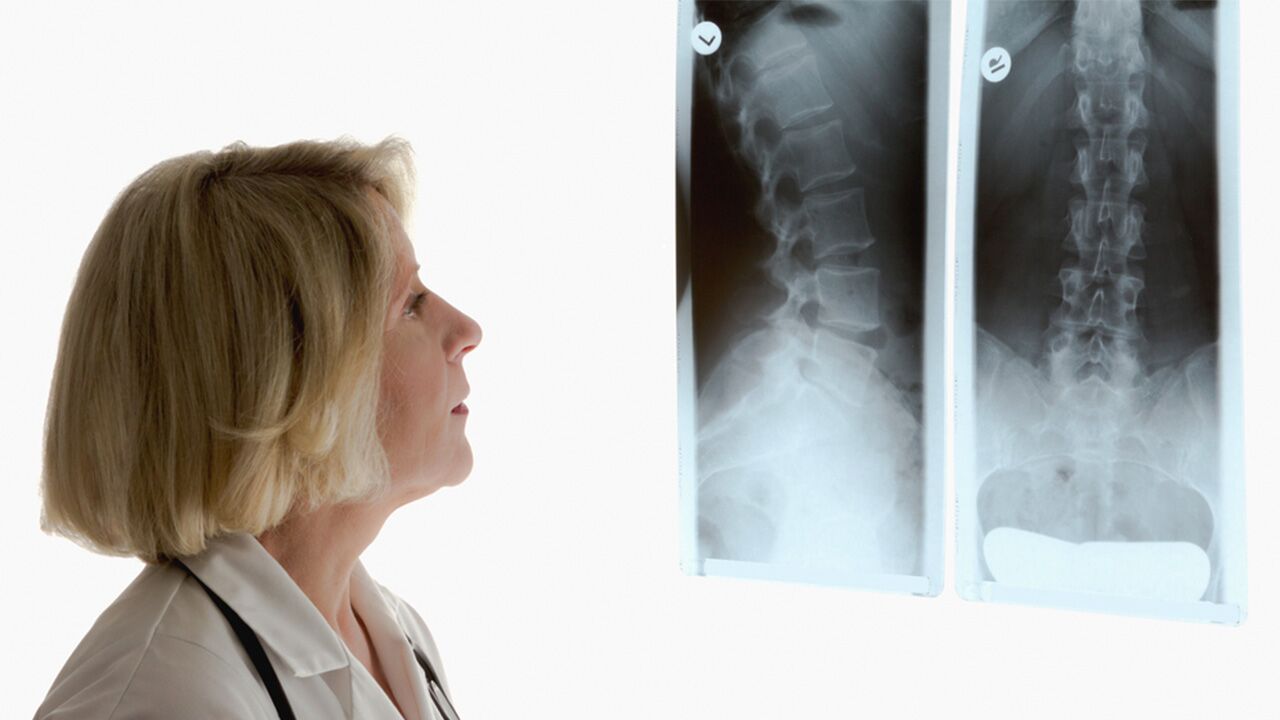What Is Spondyloarthritis? Causes, Symptoms and Treatment
 By: by Amino Science
By: by Amino Science

Spondyloarthritis is a group of diseases that cause arthritis. You also may hear it called spondyloarthropathy or the abbreviated SpA. It is unique from other kinds of arthritis because it also causes inflammation in areas called entheses where your ligaments and tendons attach to your bones. Unfortunately, there is no cure for spondyloarthritis, but recognizing the symptoms early and finding a treatment plan that works well for you can help you continue to lead an active and productive life.
What Is Spondyloarthritis?
Spondyloarthritis is an overarching name for several inflammatory rheumatic diseases that are the cause of arthritis. Arthritis often affects your joints, and spondyloarthritis causes inflammation within the tendons and ligaments of your bones, referred to as entheses. You most commonly see teenagers and people in their early 20s, particularly men, affected by spondyloarthritis.
The two types of spondyloarthritis are determined by the parts of your body that are targeted. Peripheral spondyloarthritis affects the peripheral joints in your legs and arms, while axial spondyloarthritis appears in your spine and the joints of your pelvis (called the sacroiliac joints). This disease can go beyond these areas, however, causing inflammation in your GI tract, your eyes, and other connective tissues throughout the body.
Since spondyloarthritis is a larger group of inflammatory diseases, several subcategories exist. These include:
- Psoriatic arthritis: You can develop this type of arthritis if you have psoriasis, a skin disease in which skin cells build up and create scaly, dry patches. Your immune system is triggered by psoriasis and the on switch is never turned off, causing it to attack your skin and joints. This inflammation leads to joint swelling, pain, and general stiffness in your spine, feet, and hands.
- Ankylosing spondylitis: One of the most common types of spondylitis, the stiffness and pain associated with this kind of arthritis target your ligaments and joints in your spine. Most people experience low back pain that can extend to the neck, chest, and upper portions of the back. If the condition worsens, the bones and joints can fuse together, affecting your spine’s shape and posture.
- Enteropathic arthritis: This type of arthritis often appears in conjunction with inflammatory bowel diseases like ulcerative colitis or Crohn’s disease.
- Reactive arthritis: Previously referred to as Reiter’s syndrome, this type of arthritis usually stems from a urinary tract infection or intestinal infection. As your immune system is activated, additional inflammation can occur in the mouth, urinary tract, eyes, and digestive tract, and arthritis can take hold in other joints and ligaments.
- Undifferentiated spondyloarthritis: This type of spondyloarthritis is characterized by a cluster of symptoms that doesn't fit neatly into a specific spondyloarthritis diagnosis.
Spondyloarthritis Causes
Spondyloarthritis and its subcategories of arthritis seem to run in families, indicating that genes may play a role in increasing your risk. Researchers continue to examine spondyloarthritis and further expand upon the genes they’ve identified that are associated with the condition. In particular the gene HLA-B27 has been pinpointed for its tie to ankylosing spondylitis—it’s been shown that people who have this gene have a higher risk of the disease.
Spondyloarthritis Symptoms
Signs of spondyloarthritis most commonly develop in two phases, with pain, inflammation, and stiffness being followed by the breaking down of your bones. Over time, your spine can become deformed, change shape, and lose flexibility. Spondyloarthritis can also affect other joints, and you may feel symptoms in your arms, legs, hands, feet, shoulders, and hips. Symptoms do vary from person to person and are often distinct to the type you have.

Spondyloarthritis Diagnosis
The sooner your condition is correctly diagnosed, the better the outcome and the more effectively your symptoms can be managed. When visiting with your doctor, he or she will discuss your family and medical history, conduct a physical exam, and record any symptoms you’ve been experiencing. Many times an X-ray may be taken of the particular area causing you issues. This will allow the doctor to see if any bone changes have occurred and the stage of the disease. A magnetic resonance imaging (MRI) scan may also be ordered to allow for a closer view of your joints and their condition. If your family history has any red flags, blood tests may be used to try and identify the HLA-B27 gene.
Spondyloarthritis Treatment
There is unfortunately no way to cure spondyloarthritis, but if you are diagnosed your treatment plan will incorporate pain management, maintaining joint and spinal flexibility, and lowering your risk for future complications. Your doctor will want to ensure bone deformation is avoided or slowed if it has already begun. Together you will determine what works best for you, but here are some common treatments.
- Physical therapy: Working with a physical therapist can help soothe pain and keep joints flexible and moving. If you have ankylosing spondylitis, regular stretches can help prevent your spine from stiffening into an abnormal position.
- Low-impact exercise: While exercise may seem counterintuitive, physical activity is one of the best ways you can manage symptoms like pain and stiffness. Exercise will aid in improving pain levels, increasing mobility and balance, and enhancing your overall quality of life.
- Anti-inflammatory medication: Various medication such as non-steroidal anti-inflammatory drugs (NSAIDs) can be prescribed to help reduce the severity of inflammation.
- Corticosteroid medication: Commonly injected into joints of your knee, shoulder, ankle, elbow, or spine, these shots work quickly to reduce inflammation and relieve pain. There are side effects associated with this method, so the number of shots are limited. Cortisone shots do not provide a long-term solution.
- Antirheumatic medication: Often used for treating rheumatoid arthritis, disease-modifying antirheumatic drugs may be prescribed if your arm and leg joints are affected by spondyloarthritis. Antirheumatic drugs can help slow the progression of damage caused by constant inflammation.
- TNF alpha-blocker drugs: Used to fight inflammation from a variety of conditions, TNF alpha-blockers, also known as TNF blockers, is a class of drugs that block inflammation by encouraging your immune system to return to a normal level.
- Surgery: Inflammation that never goes away and an immune system that never shuts off can be extremely wearing on your body. Joints and bone can start to break down, cartilage wears out, and your body doesn’t move and function as it used to. In this case, surgery may be necessary, including hip replacement or corrective procedures of the spine.
- Antibiotics: If a bacterial infection is identified as the cause behind your symptoms of spondyloarthritis then your health care provider may provide an antibiotic.
Spondyloarthritis Diet
Eating a balanced diet is at the core of a healthy life and minimizing the effects of any chronic condition. It is important to try and maintain a normal weight to reduce the amount of pressure that is pressing on your bones and joints. With spondyloarthritis and the constant inflammation that accompanies it, experts recommend an anti-inflammatory diet.
This means knocking out alcohol, fried foods, processed items, and sugar. To give your immune system a boost and support your overall health, try eating fatty fish, whole grains, leafy vegetables, berries, lean protein, and nuts. It is also beneficial to eats foods rich in calcium like legumes, yogurt, almonds, beans and lentils, and leafy greens. You can get an amazing amount of nutrients from healthy food, but supplementing with certain vitamins and minerals can also help your body get all it needs.
Omega-3 Fatty Acids
Essential for several functions within the body, fatty acids can be found in foods including fatty fish, like salmon and tuna, or in supplement form. Omega 3s have been found to help reduce joint inflammation associated with inflammatory arthritis conditions.
Calcium and Vitamin D
Calcium is essential for your bone and joint health. Vitamin D is an important partner to calcium in that it helps your body effectively absorb the calcium it needs. Having ample amounts of these vitamins strengthens your bone density, making bones less susceptible to breakages.
Amino Acids
Amino acids have been revered for many pain-relieving and anti-inflammatory properties and can be very effective at combating issues associated with arthritis (we wrote a whole article on it here!). They also can help build cartilage, which is especially useful if you suffer from any bone loss or deformation related to spondyloarthritis.
A supplement containing a mixture of amino acids ensures you receive a balanced amount of each essential element. Amino acids like L-methionine, L-arginine, glucosamine, and methylsulfonylmethane (MSM) help reduce inflammation, improve circulation and mobility, transfer micronutrients to joints, and decrease swelling and stiffness.
Spondyloarthritis can be very disruptive to your life, especially when the joint stiffness and pain are constant. However, a combined approach of lifestyle changes, self-care methods, support groups, medication, and physical therapy can help you lead a more active life and prevent further damage and complications.

Up to 25% off Amino
Shop NowTAGS: conditions
Join the Community
Comments (0)
Most Craveable Recipes




 833-264-6620
833-264-6620



















